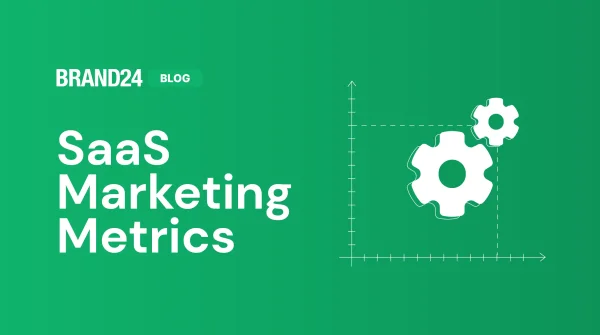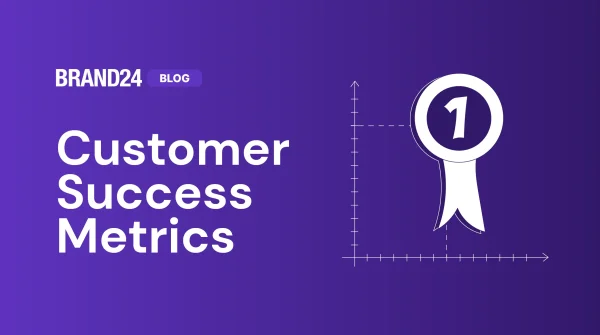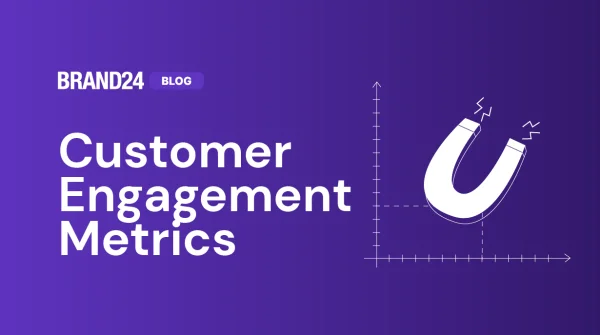Track These Key AI Metrics in 2025 to See Your Business Grow
Table of contents
In today’s fast-paced marketing world, understanding brand performance is more important than ever. With so many brands competing for attention, knowing what truly connects you with customers is essential.
This is where AI metrics come into play. They turn complex data into easy-to-understand output. These insights help brands in the evaluation of the success of their marketing efforts with high accuracy and precision.
AI metrics in marketing are measures used to evaluate the performance and effectiveness of your digital marketing efforts. They assess various aspects such as brand success, resources efficiency, and user engagement. They help to determine how well a marketing solution or strategy meets its intended objectives.
But why do metrics need Artificial Intelligence?
AI helps to improve accuracy of the measurements. Deep learning and advanced algorithm systems ensure simplified marketing tasks and better, more genuine insights.
In this article, we’ll explore how AI metrics are changing the way brands evaluate success.
Whether aiming to boost customer engagement, improve campaigns, or enhance your brand’s image, AI metrics can provide the answers you need.
Let’s examine how these systems can help unlock your brand’s full potential.
Key AI metrics to track:
01 Sentiment metrics
Sentiment analysis is super useful because it helps brands understand how customers feel about them.
Thanks to Artificial Intelligence models, media monitoring tools like Brand24 can analyze text and assess its sentiment.
This feedback is gold—knowing how customers feel allows brands to improve their products and connect better with their audience.
It’s like getting an inside look at your customers’ thoughts, helping you make smarter decisions and create a better experience for everyone.
How to measure?
There are many specialized sentiment analysis tools you can choose from.
One of them is Brand24.
We not only analyze sentiment but also break it up into different sources. This allows you to effectively work on improving your sentiment where it’s most needed.
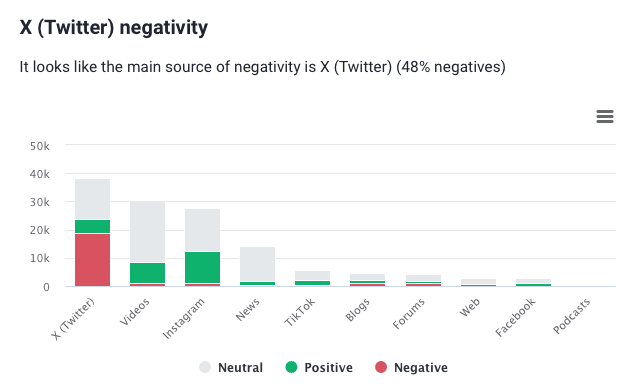
With its natural language processing capabilities, Brand24 can go much deeper than other social media monitoring tools.
Here’s an in-depth emotion analysis example.

Track sentiment with Brand24.
02 Engagement metrics
Engagement metrics are all about seeing how much people interact with your brand.
They look at the volume of mentions—how often people are talking about you—and your brand reach, which is how many people actually see your content.
These metrics are key as they show how well your brand connects with its audience.
The more mentions and reach you have, the higher your brand awareness.
How to measure?
You can track your volume of mentions and reach effortlessly with Brand24.
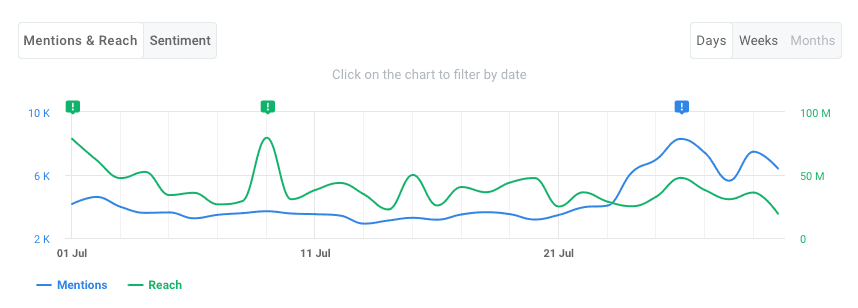
Additionally, we’ll monitor anomalies in these metrics and use our algorithms to detect the cause.
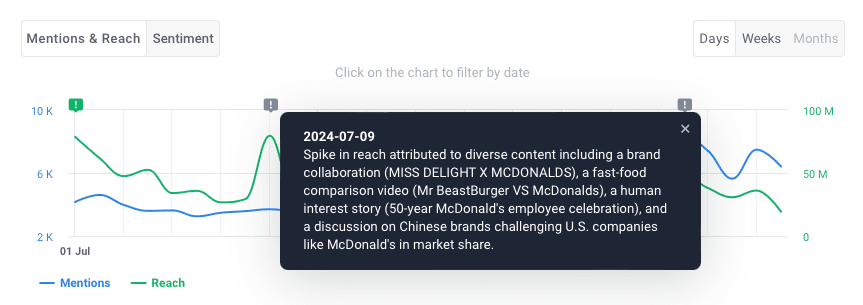
Read more on Anomaly Detector.
Brand24 measures engagement like nobody else.
03 Customer journey metrics
Customer journey metrics help you understand how customers interact with your brand from start to finish.
Conversion rate is one of them. It tells you the percentage of people who take a desired action, like purchasing or signing up for a newsletter.
It’s a good indicator of how effective your marketing is at turning visitors into customers.
Another important metric is the customer lifetime value (CLTV).
This measures the total revenue a customer is expected to bring over their entire relationship with your brand.
Knowing your CLTV shows how valuable each customer is, guiding decisions on marketing spend and customer retention strategies.
Together, these metrics give you a clear picture of the customer journey and how to optimize it for better results.
How to measure?
To measure the conversion rate, divide the number of conversions (like purchases or sign-ups) by the total number of visitors or actions taken (like clicks on an ad). Multiply by 100 to get the percentage.
For customer lifetime value (CLTV), multiply the average purchase value by the average number of purchases per customer, then multiply by the average customer lifespan.
This gives you an estimate of the total revenue you can expect from a customer over time.
You can also use business intelligence tools to count these metrics for you.
04 Brand perception metrics
Brand perception metrics help gauge how people view your brand.
Brand awareness measures how many people recognize and remember your brand.
Brand reputation goes a step further, assessing what people actually think about your brand.
This includes analyzing reviews, ratings, and social media comments to understand the overall sentiment.
These metrics are crucial because they show how well your brand is perceived in the market and can help you build a stronger, more positive image.
How to measure?
You can track brand awareness by conducting surveys or using tools to track mentions of your brand online.
Brand24 offers a Presence Score metric. It reports your brand’s level of online visibility compared to other businesses.

Measuring business reputation couldn’t be easier than with Brand24. We have our own Reputation Score metric for this.

Monitor AI metrics with Brand24!
05 Content performance metrics
Content performance metrics help you understand how well your content is doing. Reach sentiment looks at people’s emotions and opinions when your content reaches them.
It shows whether your message is received positively, negatively, or neutrally.
Reach efficiency reports how effectively your content reaches the right audience.
It’s about getting your message in front of people likely to be interested rather than just a large number of people.
These metrics are essential because they tell you not just how far your content spreads but also how well it resonates with the audience that matters most to your brand.
How to measure?
Brand24 has got you covered by measuring both of these metrics.
Just set up a media monitoring project and check your metrics easily.
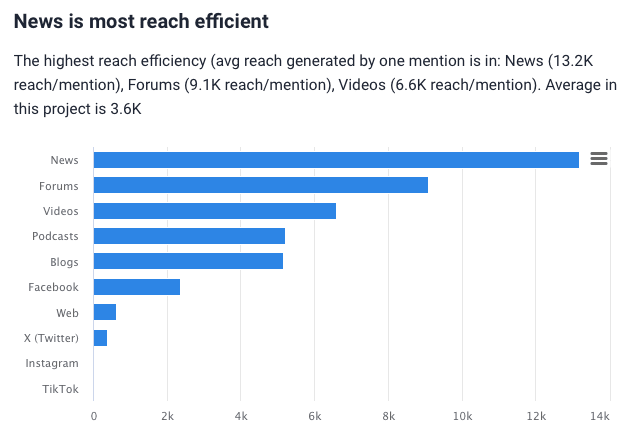
Brand24 measures AI metrics with incredible precision.
06 Predictive analysis metrics
Predictive analysis metrics use data to forecast future outcomes and risks.
Churn prediction identifies which customers are at risk of leaving your brand. Analyzing past behavior and trends helps you take proactive steps to retain them.
Sales forecasting estimates future sales based on historical data, seasonal trends, and market analysis. This metric helps in planning inventory, budgeting, and setting realistic sales goals.
Customer behavior predicting uses patterns in data to anticipate future customer actions, like what products they might buy next or when they might make a purchase.
This allows for more targeted marketing and personalized experiences, ultimately boosting customer satisfaction and building brand loyalty.
Read more: Check other Brand24’s AI Solutions
How to measure?
For evaluating churn prediction, analyze customer data such as purchase history, social media engagement levels, and feedback. Use machine learning models to identify patterns that indicate a risk of churn, like reduced activity or negative reviews.
You can also try solutions like Salesforce Einstein and HubSpot. They have unique capabilities streamlining this tedious task.
For sales forecasting, gather data on past sales, seasonal trends, and market conditions. Use statistical models, AI algorithms, or tools like Tableau to forecast future sales figures. This helps in setting goals and planning resources.
Predicting customer behavior involves analyzing data such as browsing patterns, purchase history, and demographic information. Advanced tools like Google Analytics and AI models have the ability to predict likely future behaviors.
Read more: Check best business analytics tools
Conclusion
In this article, I presented 6 kinds of AI metrics worth measuring in 2024.
While the process of data collection and analysis may seem complicated at first, remember that you can leverage versatile AI systems to support your efforts.
You can train your own AI model. This is a good solution for case-specific needs that cannot be met by popular software or work on high-sensitivity datasets.
However, you can also use the services of already existing solutions. This option is definitely more accessible and will satisfy most users.
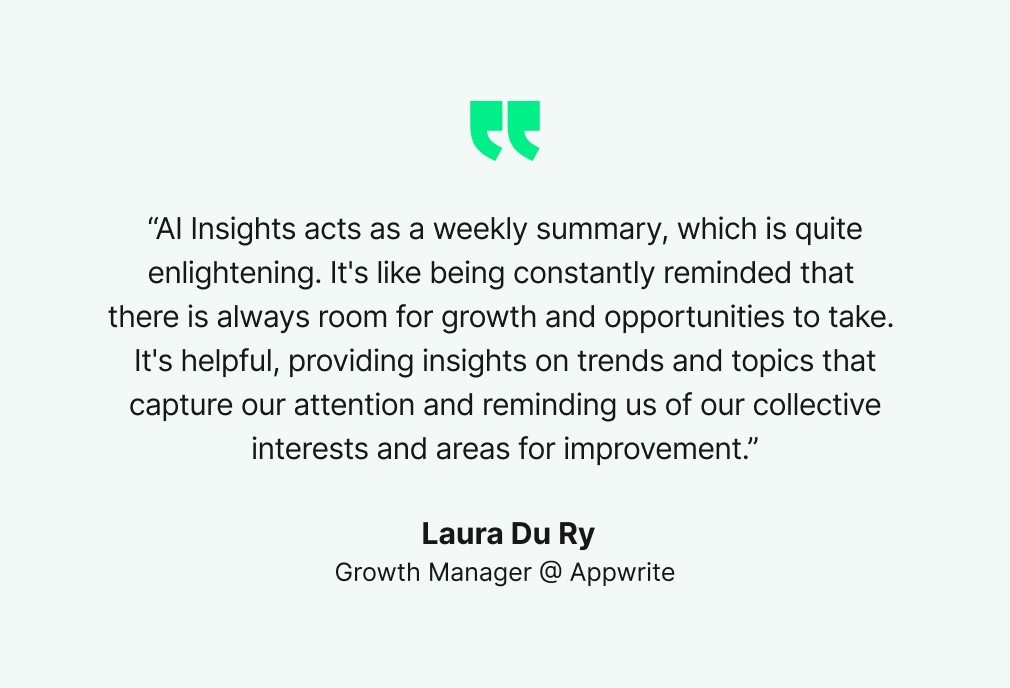
Discover our client’s success story — read the case study.
The best software offers automated analysis and actionable insights in context. This automates the data evaluation process and saves you time by streamlining marketing tasks.
Don’t settle for good when you can have great. Try Brand24.
Key takeaways:
- AI metrics enhance productivity by providing actionable insights. They allow you to focus on strategic work instead.
- The use of AI improves the accuracy of measured metrics and streamlines related tasks.
- Brand24 offers robust AI-powered analytics for evaluating sentiment, engagement, brand perception, and content performance metrics. Test it today and discover how AI systems can improve your metric evaluation processes with high-accuracy insights.
Start an account with Brand24 for free!
Related articles

